Oil Painting: Convergence of the East and the West
Art Exchange VOL.Art Exchange|Claudio Strinati
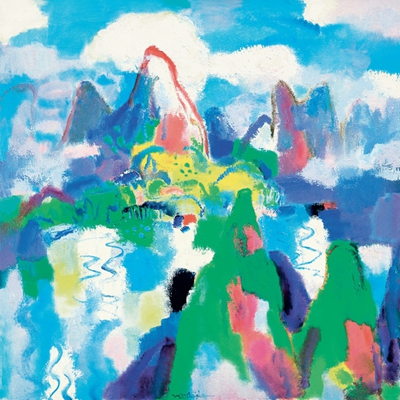
Series of Mountains and Rivers--- Green Mountain After Rains (Oil painting) CHEN Junde
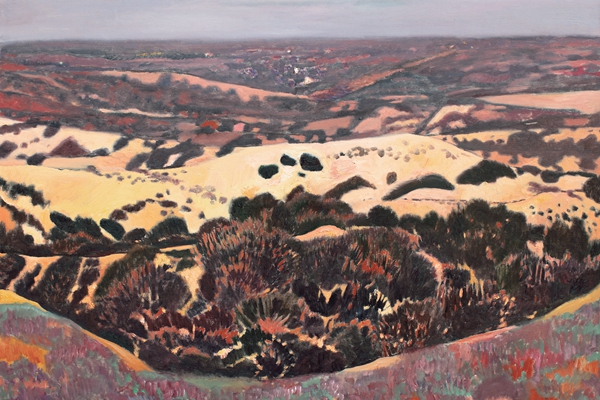
Night Wind in Dessert (Oil painting) WANG Keju
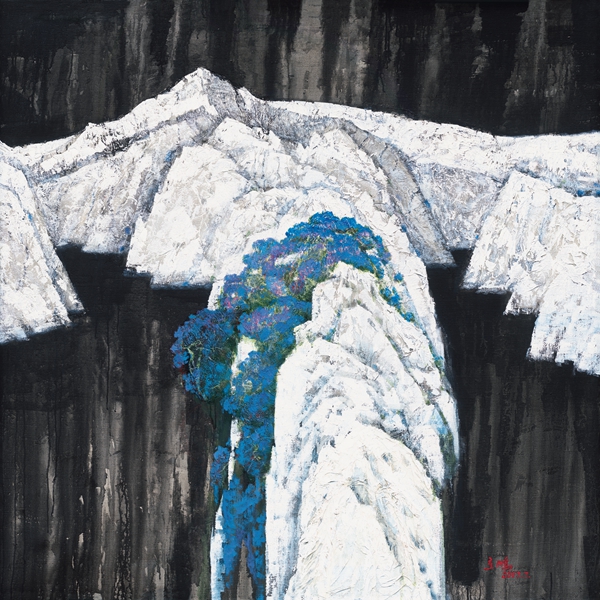
Symphonic Blue White Black (Oil painting) WEN Lipeng
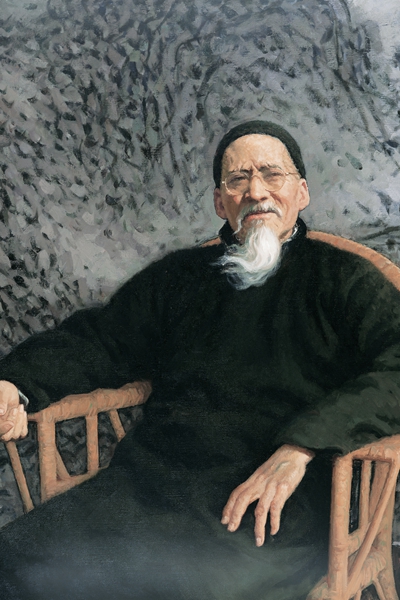
Huang Binhong in Later Years (Oil painting) JIN Shangyi
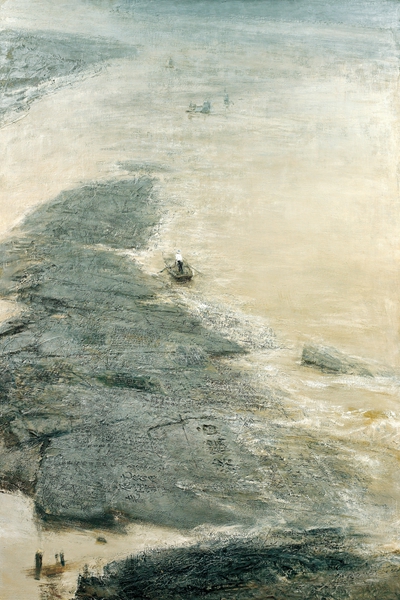
River and Stone Books (Bai Heliang) (Oil painting on the board by using a variety of materials) ZHONG Han
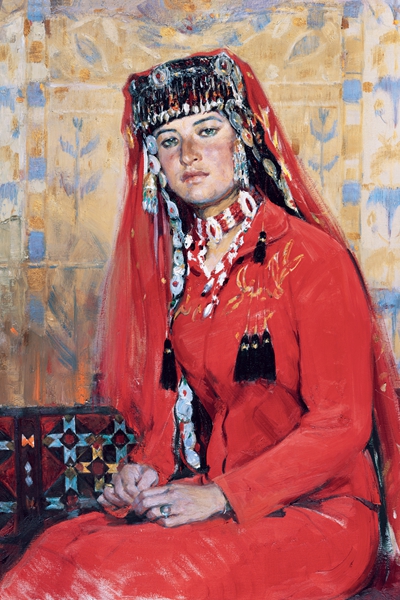
Dressed Tajik girl Ayi Guli (Oil painting) QUAN Shanshi
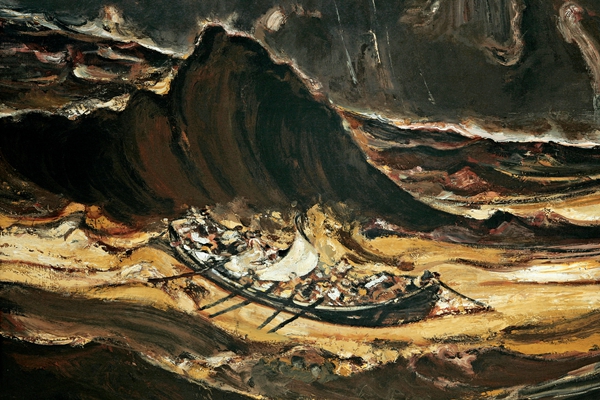
The Yellow River (Oil painting) DUAN Zhengqu
History is like a pendulum swinging from one side to the other.
In the 18th century, history, the pendulum swinging between the Chinese and European culture, swung very precisely in one direction: what we call the "Chinese Style", as a true fashion, it was spread to the Western world. Most importantly, the lacquer furniture, decorated with scenes and characters of Chinese culture and individuality, is popular in countless Western cultures, including Italy. In Venice, Milan and Turin in the 18th century, we have found a lot of Chinese furniture and tapestries with Chinese life scenes. In music, drama and literature, people from the Chinese world, or people inspired by Chinese culture, are often created. The trend from China has fascinated the whole world because of its elegance and beauty, especially the aristocratic class. What's more, Venice traveler Marco Polo arrived in China in the 14th century and described his adventures in the East and his understanding of China's wonderful and fascinating stories in his best-selling book. Books are still popular in the Western world. In his record, China's art and science are very advanced, and the well-known Venetian merchants like him have never stopped to be surprised by the new and wonderful issues they have experienced in this country.
Then, over two centuries between the 17th and 18th centuries, many Italian missionaries have set foot in China, including the famous Matteo Ricci and many other missionaries who were at the same time or later than him. They have been very successful in integrating into Chinese life. They also knew how to find a harmonious connection between Europe and China and understood how this would change the world. Despite the strange language and social habits, the two great empires could finally meet and merge.
However, out of passion for knowledge, science, technology, politics and art, for the enthusiasm for life, and a more productive and fruitful life experience, two great countries that look so different and far apart still closely linked together.
It is much moving to think about how these great masters lived in a stage in the history of universal art. In their art, some of the basic values of the human spirit are easily and urgently transformed from one traditional mode to another, while at the same time, this transformation does not lose any of its own cultural origins' primitive meaning, and suddenly, enriches itself in some unexpected ways.We can, of course, insist that, in many cases, the spiritual and moral tensions we admire in many portraits stem from Confucianism, the idea that is clearly infiltrated in all aspects of Chinese culture, the profound assimilation of Western oil paintings; But it is also certain that
Chinese culture has found a direct and perfect intersection in some direction of Western thought, which can be traced back to Plato in ancient Greece before the spread of Christianity, and have been integrated into our current value system. Therefore, a common source allows Chinese artists to enter our world with this feeling and respect, and only art can achieve this feeling and respect in more general social debates.
The Chinese culture is characterized by its core values and has led to intense and profound exchanges with the Western world. It is no longer considered as distant or misunderstood, but in many ways close to the West and share its ideas, while not giving up its deeper and more real roots in any way. It's about integration and dialogue, not attribution or imitation.
The contemporary Chinese artists possess strong personality. Although the purpose is profoundly consistent, the styles remain quite different, showing wide range with emphasis on naturalism that mimics superb technology, from the most powerful surrealism in the United States in the 1970s and 1980s to symbolism, abstraction and even pop art. Even though these artists belong to old-schooled categories, their style can still reflect the diversity of personal tastes and individual experiences, and share the cultural premise of their own traditions.
If we compare the long history of China for thousands of years with ours, there is no stage in its division that directly corresponds to our period, such as the Baroque Renaissance and neoclassicism. For Westerners, all aspects of art history have far-reaching significance, but for a Chinese intellectual, the term "Renaissance" may already contain all the nuances of artistic change during that period.
Under the perspective of outstanding Chinese artists, it is clear that there is not only one Western traditional culture that can compete with it; comparing with France, Germany, Russia and Scandinavia, the dialogue with Italian culture is strangely different. The cultures I have exemplified are because of the grand figurative artistic traditions that these artists have formed in the academic environment. They have a clear understanding of the diverse figurative art traditions of Europe and the United States, and it has raised strong interests from them, and sometimes they even express their keen and mature criticism.
We have noticed that there is a peculiar feature in the field of contemporary Chinese art, that is, artists have a keen attention to microscopic, fine-grained and mostly unnoticed daily life. In fact, they are the core component of human emotions. It is the most central part of human emotions identified and highlighted by artists through their capacity and passion.
A group of grand figures are unfolding in front of our eyes. Each character in the painting represents itself and at the same time transcends its individual to form a universal symbol. In this sense, today's art is reasonable in reference to the art of the Renaissance, as an important feature of the Renaissance was the combination of instance and spontaneity, but it was also created by strict mediation between art and science. In fact, artists are scientists in the field of talent that they represent, but most importantly, works of art are the result of scientific investigations of humans and nature. Art is a study of the essence, and all the artists in this exhibition are researchers who study the essence. This can be found and traced, and more often, on the invisible and unknowable edge.
Undoubtedly, the uniqueness of each art form derived from Chinese tradition is always the exploration of the ultimate meaning of life and the meaning of existence itself. On one hand, the Western world is indeed deeply nourished in its artistic and philosophical creations, but it is always mixed with other concerns and expressions. On the other hand, in China, perhaps on the basis of Confucianism, this uniqueness of art and perception has always been at the forefront of philosophy, literature and painting.
Obviously, they contemporary Chinese oil painters have never given up this precondition, which strongly depicts the characteristics of ancient and modern China, but we can say that the Chinese oil painting artists even grafted this premise to the western cultural backbone. However on the other hand, the Western culture controls these preconditions and prevents them from appearing too much.
In this sense, the Chinese oil paintings are typical of landscapes and even still life or indoor paintings. Obviously, our intention is to project our mental state in the environment around us, which is an obvious condition in most works, which allows us to understand how these painters' works with extremely high intrinsic qualities reflect their Chinese identity.
The ancient relationship between image expression and calligraphy is a purely Chinese feature that European Western art does not know much or understand, also an aspect that Chinese oil painting cannot ignore: the influence of ancient calligraphy art is embedded in Western realism with a solid and naturalistic structure. We are faced with a very realistic world of painting, but it is "written" as in the most distant and remarkable Chinese tradition. Sometimes these paintings look like geographical maps, sometimes giving people a clear feeling, like following painters to work to move from a very close perspective to a very far perspective.
Painters, both in Europe and in the tradition of China, play the role of explorer, but there are significant differences amongst them. This time, we "encountered" some painters whose realism seems to transcend the most daring expression of American surrealism in the 1970s and 1980s; In addition, we have also "encountered" some artists whose styles still seem to be connected with the ancient peers, who draw a single symbol on paper and then tempted those who observe the work to use their own thinking ability.
In general, we are faced with a real time convergence, and the moments of abundant and fruitful achievements in the history of world civilization are often based on this.
Copyright © 2011 CFLAC Corporation, All Rights Reserved














